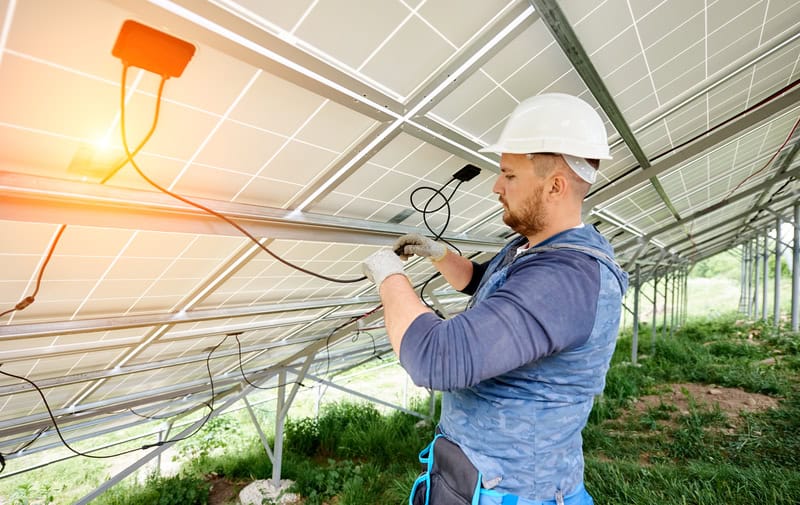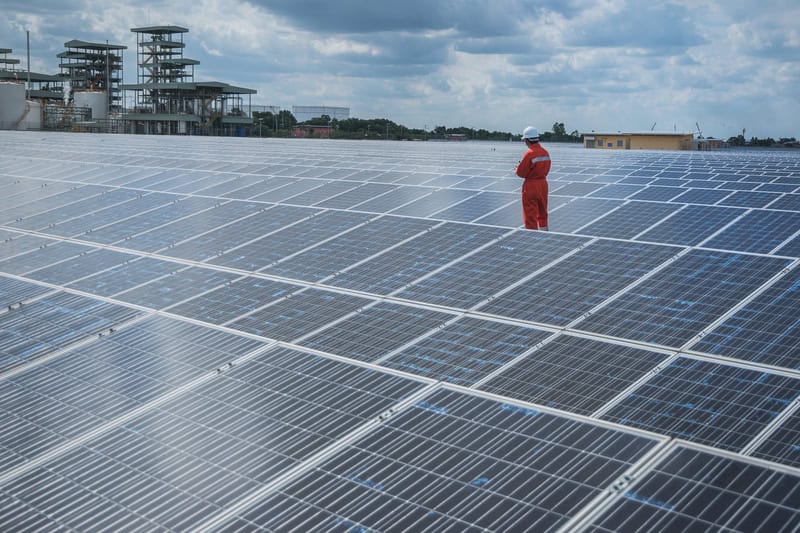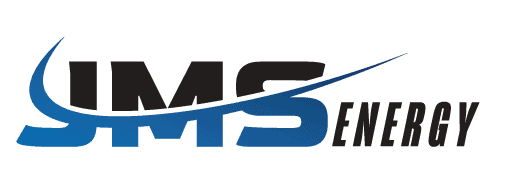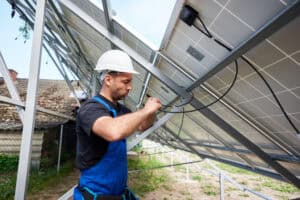
Table of Contents
As the solar industry continues to grow, so does the importance of protecting these long-term investments. For owners and operators of utility-scale solar farms, consistent performance and minimal downtime are vital. One of the most effective ways to safeguard your solar assets is through Preventative Maintenance for Solar Farms.
In this detailed guide, we’ll break down what preventative maintenance really means in the context of solar farms, why it’s a non-negotiable component of a successful operation, and how JMS Energy offers best-in-class solutions to keep your systems running at peak capacity—year after year.
What is Preventative Maintenance for Solar Farms?
Preventative maintenance refers to the scheduled, proactive servicing of equipment to avoid unexpected failures and optimize solar farm performance. It’s the opposite of reactive maintenance, which only occurs after a breakdown.
In the context of utility-scale solar, preventative maintenance includes routine inspections, testing, calibration, cleaning, and component replacements to:
- Maximize energy production
- Minimize downtime
- Extend equipment lifespan
- Ensure warranty compliance
- Reduce long-term operating costs
JMS Energy’s approach to preventative maintenance is built on real-world data, predictive analytics, and expert fieldwork, making it both efficient and highly effective.
Why is Preventative Maintenance for Solar Farms Important?
A solar farm is a complex system of interconnected parts, from PV modules and inverters to transformers and trackers. Even minor issues—like dust buildup or a loose connector—can snowball into significant energy losses if left unchecked.
Here’s why preventative maintenance is critical:
| Benefit | Impact |
|---|---|
| Increased Energy Output | Cleaner, calibrated systems perform more efficiently |
| Reduced Operational Costs | Avoids expensive emergency repairs and component failures |
| Asset Longevity | Protects inverters, panels, and wiring from premature degradation |
| Improved ROI | More consistent performance over 20–30 years |
| Warranty Compliance | Keeps systems eligible for manufacturer support and insurance |
JMS Energy integrates these goals into every maintenance plan, ensuring your solar farm remains a top-performing asset in your portfolio.
Key Components of Preventative Maintenance by JMS Energy
1. Visual Inspections and Physical Assessments
Routine walk-throughs of the site identify issues early. JMS technicians inspect:
- PV modules for cracks, delamination, or hot spots
- Inverter cabinets for corrosion, overheating, or loose connections
- Cable trays and conduit for damage or wear
- Grounding and bonding for compliance with electrical codes
- Tracker systems for alignment, wear, or structural issues
2. Electrical Testing and Performance Analysis
JMS Energy uses advanced tools to analyze system health, including:
- IV Curve Tracing – Evaluates panel performance at the string level
- Insulation Resistance Testing – Detects potential electrical leaks
- Thermal Imaging – Finds hot spots in panels, fuses, and inverters
- Voltage and Current Checks – Ensures balance and proper load sharing
These methods provide real-time insights into asset condition and identify underperforming areas.
3. Inverter and Transformer Maintenance
Inverters are the heart of a solar farm. JMS technicians perform:
- Fan and filter replacement
- Firmware updates
- DC/AC terminal torque checks
- Transformer oil inspection and testing
- Ground fault and arc fault detection system checks
Routine care reduces the risk of inverter failure, a leading cause of downtime in solar systems.
4. Cleaning and Vegetation Management
- Module Cleaning: Removes soiling that blocks sunlight (especially critical in dusty or agricultural areas)
- Weed & Grass Control: Prevents shading and reduces fire hazards
- Drainage and Erosion Checks: Ensures infrastructure integrity during storms or floods
Maintaining a clean, hazard-free environment around your system contributes directly to performance and safety.
5. Tracker & Racking System Checks
For solar farms with tracking systems, JMS performs:
- Motor calibration
- Structural bolt torque verification
- Lubrication of mechanical components
- Alignment verification for optimal sun tracking
Maintaining tracker accuracy improves daily energy yield by up to 20%.
How Often Should Preventative Maintenance Be Done?
JMS Energy recommends a bi-annual or quarterly schedule for most utility-scale solar farms. However, the frequency may vary depending on:
- System size and complexity
- Climate and weather conditions
- Manufacturer guidelines
- Warranty requirements
- Historical performance data
They also offer customized maintenance schedules based on predictive analytics and operational history, giving owners a data-driven roadmap for upkeep.
Tools and Technology JMS Energy Uses for Preventative Maintenance
JMS Energy enhances traditional maintenance with cutting-edge digital tools:
| Tool | Function |
|---|---|
| Drones with Thermal Cameras | Scan large areas for module hot spots and anomalies |
| SCADA Systems | Monitor real-time performance across all components |
| Digital Work Order Systems | Track tasks, service records, and reporting |
| Mobile Diagnostic Units | Field-deployable tech for rapid testing and repairs |
| AI Predictive Models | Forecast failures before they occur using historic trends |
These technologies help JMS move beyond traditional maintenance and offer smart, scalable solar solutions.
What Sets JMS Energy Apart?
- Nationwide Reach – Servicing solar farms across the U.S.
- Certified Technicians – NABCEP-certified professionals and OSHA-compliant field crews
- Proactive Communication – Transparent reports, alerts, and customer support
- Sustainability-Focused – Environmentally responsible maintenance practices
- 24/7 Emergency Backup – Rapid-response teams for urgent maintenance situations
With JMS Energy, preventative maintenance becomes a strategic advantage, not just a checklist.
Frequently Asked Questions (FAQs)
Q1: What’s the difference between preventative and reactive maintenance?
A1: Preventative maintenance is planned and scheduled to avoid failures. Reactive maintenance is unplanned and performed after equipment has already failed.
Q2: Does preventative maintenance affect solar farm warranties?
A2: Yes, most manufacturer warranties require regular preventative maintenance to remain valid.
Q3: How much energy loss can dirty panels cause?
A3: Depending on location, soiling can reduce output by 5–30%. Regular cleaning can prevent this loss.
Q4: Can preventative maintenance help with insurance compliance?
A4: Absolutely. Many insurers require documented maintenance to cover damages or system failures.
Q5: Do I need SCADA for effective preventative maintenance?
A5: While not mandatory, SCADA systems greatly enhance preventative maintenance by offering real-time alerts and performance data.
Q6: Is preventative maintenance cost-effective for smaller solar farms?
A6: Yes, even smaller systems benefit from early issue detection and extended equipment life, ultimately reducing total ownership costs.
Final Thoughts: Invest in Uptime with JMS Energy

Preventative maintenance for solar farms isn’t just about checking boxes—it’s about protecting performance, boosting ROI, and ensuring your solar investment runs smoothly for decades. JMS Energy’s expert approach combines field-tested practices with advanced diagnostics to offer comprehensive, reliable solar upkeep.
Don’t wait for your system to fail. Be proactive—partner with JMS Energy and keep your solar farm shining at full power.
Want to start today? You can contact JMS Energy here.






